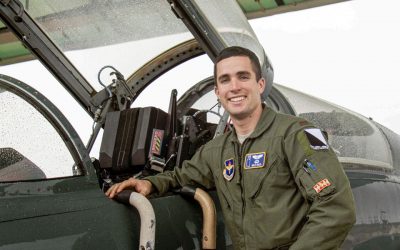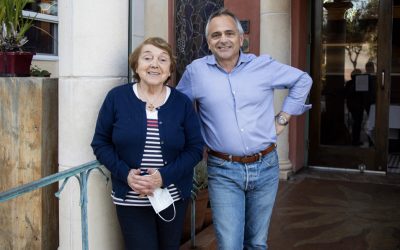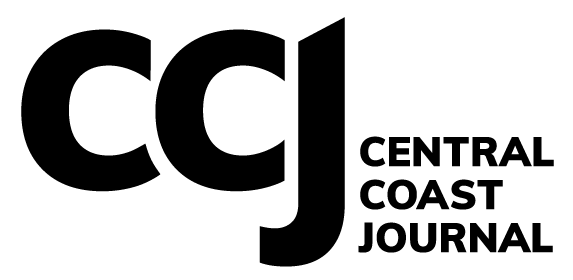We start this story with a meditation of the evolving use of language. After a year of isolation, it’s a worthy topic. If we pay attention to it, the language we use can identify common goals, enrich society, and foster community-building. By way of example, consider this:
In 1968, a science fiction writer and television producer, Gene Roddenberry, coined a term with a surprising level of depth and resonance. His Infinite Diversity in Infinite Combinations (IDIC), like so much in popular culture, originated as an advertising device. But for a world population gripped by the Cold War and stuck between ideologies, and for a national populace facing the strife of prejudice and injustice at home, the idea carried weight. IDIC was embraced by many marginalized groups who found some common ground with each other.
While his work has since spawned a lingering franchise featuring zooming spacecraft and laser beams, Roddenberry’s best quote explaining IDIC suggested that humanity really needed to spend some time working on itself first. “Until humans learn to tolerate—no, that’s not enough; to positively value each other—until we can value the diversity here on Earth, then we don’t deserve to go into outer space and encounter the infinite diversity out there.”
Now this introduction will seem like quite a stretch to the non-profit subject of this piece, but there is one group that has always been well ahead of the curve when it comes to teaching us lessons about language and inclusion—a large and diverse group called Americans with Disabilities. A short synopsis of the history of their struggle offers a unique window into their trials and tribulations, now exacerbated by Covid-19.
The push to acknowledge rights for people living with disabilities intensified during the 1960s and 1970s. To keep pace with the gains of other freedom movements, The Rehabilitation Act of 1973 was passed, which—for the first time—prohibited discrimination of and created rights for disabled persons. The Individuals with Disabilities Education Act (IDEA), rechristened that law in 1997 after its passage in 1975. And the more well-known, but not necessarily understood, Americans with Disabilities Act (ADA) of 1990 provided foundations for quality-of-life improvements that two generations of Americans have now taken for granted. For example, a public infrastructure design feature as simple as the slanting “curb cuts,” help not just the intended base of wheelchair users but also bicyclists and pedestrians to safely navigate city streets. It’s but one example of the long-overdue societal reform and public awareness so needed (but not yet embraced by all) in our American way of life.
And none of it was gifted as a gesture from a magnanimous able-bodied majority to a complacent minority of the grateful infirm (For further details on this struggle, see www.thekidsareallright.org). It was brought about by the relentless work of people like Beth Currier, founder of the 501c3 non-profit, Rancho de Los Animales for the Disabled (RAD) in Arroyo Grande.
“I don’t like the word handicapped,” she explains, bringing us full circle back to the importance of language. “It comes from old English terms for a beggar, someone sticking out, hat in hand, for charity.”
Currier, who holds a Masters in Counseling and Guidance, and became the first Counselor for Disabled Students at Allan Hancock College, listed some of the discriminatory attitudes she has encountered during 20 years of education. Another way to look at terminology, she added, is to think about what accurately distinguishes people who consider themselves “normal” from the rest of society.
“You all came up with words for us, but we call you TABs.” She spells it out, “the Temporarily Able Bodies.” Folks who may have recently grown weary of the oft-trotted out phrase “new normal” may have also spotted the problematic implications of that terminology.
“I’ve had this discussion about naming as well,” she said. “If you use the word ‘normal’ in your organization or say you want to normalize people with disability, you call your own clients abnormal by default.”
Sitting across a custom-built kitchen island that comfortably puts wheelchair users and any guests in her ranch house at the same eye level no matter their abilities, Currier discusses nearly four decades of running the organization which focuses on her two priorities in life. In order, 1) working with people, and 2) working with animals.
In 1955, through a process no longer used today, Currier was one of approximately 150,000 American children accidentally exposed to live polio virus from an improperly produced vaccine. Doctors told her she would never be able to walk or ride a horse again. Thankfully her father, mother, and grandfather did not subscribe to reinforcing arbitrary limitations.
Her grandfather got her a $60 pony in 1957 and the animal would “become her legs” for a time, the first of several service animals which she only stopped relying on recently with the use of electric conveyance.
In 1960 she was the only one in her UCLA graduating class to use a wheelchair. This, after a high school guidance counselor told her to pursue broom-making in the workshop, as she was “still good with her hands.”
In 1978, she channeled the frustration of dealing with inadequate educational resources into becoming the one who would ensure others better opportunities, first at Allan Hancock, and then for two decades as the Assistant Coordinator of the Disability Resource Center at Cal Poly San Luis Obispo, where she also obtained her master’s degree.
In 1983, she moved herself and the RAD organization onto an 8-acre ranch in Arroyo Grande. Here, people living in San Luis Obispo and Santa Barbara Counties with a varied array of disabilities, and their families, have sought the unique services provided. The “ranch experience” is a specific form of inclusive activities distinctly different from the more recently en vogue “equine therapy.”
Currier’s father, a physician who specialized in preventative medicine, helped her build the ADA compliant ranch home around 2001, which (she said in retrospect) may have been part of an expression of internalized guilt over her injury. But of the three bastions of familial support she mentioned, only her mother expressed outright fear for Currier’s future.
“She was worried about me taking a risk,” Currier recounted, “I said, ‘Look, I’m not on drugs, I’m not on the street … your daughter has always been able to provide for herself.’ After that she didn’t bring it up.”
Currier sees the value in some old aphorisms. To wit, “don’t judge a book by its cover,” meaning in this case that the physical form a person’s body comes in is a poor indication of the mental and physical feats they may be capable of. And “no such thing as a free ride,” which is less harsh than it sounds as she refers to the basic labor exchange she offers for volunteers and therapy riders alike to earn riding time and lessons.
As a properly registered nonprofit, they were also one of the few organizations capable of taking on Community Service volunteers with disabilities looking to fulfill graduation requirements or even court-ordered hours. This basic arrangement model and steady pace of events and donations worked well until March of 2020. Since then, due to pandemic limitations, the organization has suffered a nearly 100 percent turnover in paid positions, cessation in revenue from the closure of their two charity thrift shops, and fall off in volunteers willing to supply the daily labor that keeps the place running. The immediate response from neighbors to a local television report in early August did offer some encouraging results. In the story, Currier was quoted that no matter what, it would be, “really important to me that we maintain this on some level. Even if I am down to three horses and one pony, I still will be doing this.”
But off-camera, she expressed concern that after so long, and coming so far, the public had grown complacent.
“We were [one of] the very first,” she said. “Now it’s either they think we’ve always been here and we’re part of the background, or you know, also there are a lot of new people. They haven’t seen what we did with the Special Olympics every year, or know they could visit.”
With the availability of vaccines easing restrictions, visitors are again able to organize time on the ranch with twice-weekly rides. Birthday parties and similar gatherings are once again available with the request that the unvaccinated visitors wear a mask. While interviewing Beth, two regular visitors with special needs are taking part in group rides with other volunteers.
“Maria has learned and experienced so much more here than with the last program we took part in,” explained Jo Gledhill, mother-in-law to Maria Gledhill. Extended family members put in some volunteer time as a group to compensate for the equine time.
While they are both living with cognitive disabilities, the elder Gledhills’ son William and Maria have a marriage outlasting most, going on 20 years after they met in a pottery workshop. As his wife is getting outfitted for a helmet and climbs up to mount her favorite horse, Moonpie, William is content to stay seated at the ranch, helping to shred bread for ducks and peel produce with his father Ron. Ron in turn had returned from outfitting a rabbit hutch for the ranch’s latest petting zoo arrival, a small brown bunny. (The zoo is also, Currier said, a more recent addition.) Not the most onerous work but well-suited to the philosophy of each contributing according to his/her own proficiency.
Maria was more verbose in sharing with her riding companions some of the recent traumatic experiences she’d had. In this case related to previously taking a fall off Moonpie and returning to face the challenge. But no less than three of the seven people gathered for the ride, most of whom would be classified as able-bodied, shared that their participation in some way helped with PTSD or trauma-related symptoms of their own.
Wyatt Ryan, a local licensed therapist who volunteers in a non-professional capacity with his daughter Sophie as she furthers an interest in veterinary medicine, noted that the existence of RAD is itself a community resource.
“It’s not just that it’s a place to come,” he said. “Animals pick up everything you give off. You can see for yourself what you’re putting out there.
That’s a valuable tool professionally that programs use, but just being present, you see how both people and animals cue off each other,” he continued. “It’s very reflective.”





